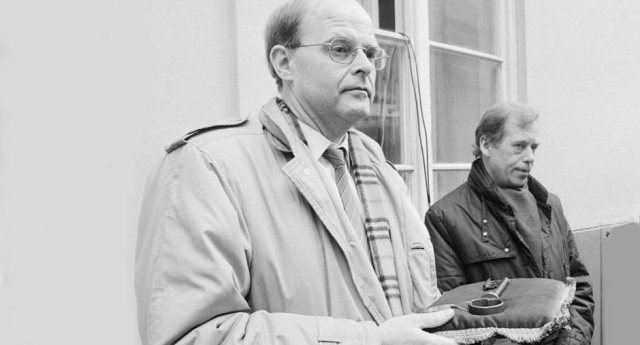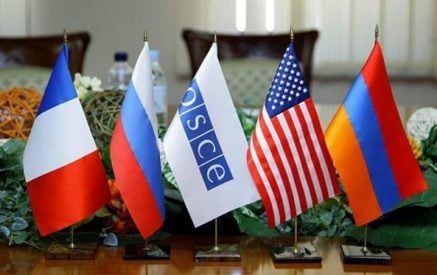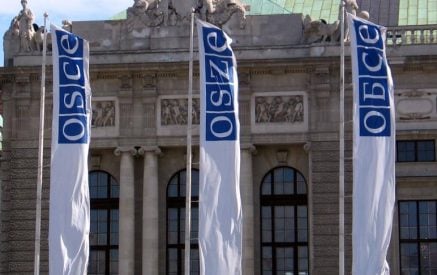The OSCE’s origins date back to the early 1970s and the Conference on Security and Co-operation in Europe (CSCE), which during the Cold War served as an important multilateral forum for dialogue and negotiations between East and West, leading to the fundamental principles contained in the Helsinki Final Act (1975).
Until 1990, the CSCE functioned mainly as a series of meetings and conferences that built on and extended the participating States’ commitments, while periodically reviewing their implementation. Even though the process was slow and not easy, it gave birth to human rights movements (Helsinki Watch and Helsinki Committees) and contributed to confidence- and security-building measures in the OSCE area, and has led to the signing of the Treaty on Conventional Forces in Europe.
Last year we commemorated the 30th Anniversary of the Paris Summit. The Summit brought to life annual meetings of the Ministerial Council prepared by Senior Officials and the Parliamentary Assembly. To support the work on the three dimensions, the Summit decided to establish permanent structures, namely a Conflict Prevention Centre in Vienna, an Office for Free Elections in Warsaw and the Secretariat in Prague.
On 20 February 1991, the Czech and Slovak Federal Republic provided the CSCE Secretariat its premises from which it began to provide support to participating States.
Read also
To commemorate this moment, we spoke with Nils Eliasson, the first Director of the CSCE Secretariat and senior Swedish diplomat. He shared his views on what it was like at the inception of the organization, the challenges they faced, and what he feels were some of the greatest achievements during that time.
How did your engagement with the Conference on Security Co-operation in Europe start?
I had been working with the CSCE for six years in various capacities before moving to Prague in 1991 to open the Secretariat. I was already a member of the Swedish Delegation during the latter part of the CSCE Madrid Follow-up Meeting, working with the mandate on the Confidence- and Security-Building Measures Conference in Stockholm. I continued as the Diplomatic Advisor at the Secretariat of the Stockholm Conference and then moved on to the CSCE Vienna Follow-up Meeting where I was co-ordinator of the so-called Contact Group for the Third Basket dealing with human rights issues, information, culture and education.
What were the challenges you faced?
Until the opening of the CSCE Secretariat in Prague in 1991, the CSCE had never had any permanent organizational structure since its beginning in 1973. We therefore faced numerous technical, organizational, legal and financial challenges. Financial and staffing rules had to be drafted from scratch, taking into account the needs of the negotiators at the Ministerial Meetings and the meetings of the Committee of Senior Officials. The Foreign Ministry of the Czech and Slovak Federal Republic provided a 1 million USD cash advance to enable us to open the Secretariat by recruiting staff to be seconded by participating States, permanently employed local staff and short term local and international language staff.
The then imminent collapse of the former Yugoslavia triggered many more meetings than anticipated when the financial arrangements and staffing were decided. Because of the slow disbursement of financial contributions from the participating States, I was obliged at the time to take out a substantial loan in my own name at our Prague bank to finance the numerous scheduled meetings, additional meetings and emergency meetings as they were called depending on the circumstances. One of the legal problems causing this unusual arrangement was the fact that the CSCE, at that time, did not have any internationally recognized legal personality. The meetings often stretched late into the night placing heavy demands on both delegates and staff. The Foreign Ministry of the host country was exceptionally helpful in these circumstances and often organized refreshments, literally in the middle of the night.
Another practical challenge was accommodating the increasing number of participating States. For example, as a consequence of the dissolution of the Soviet Union, ten new participating States were admitted at the same time in the short January weeks leading up to the 1992 Prague Ministerial Meeting. Even practically producing the new flags of these additional participating States was complicated. In the lead up to the Prague Ministerial Meeting, I particularly remember the strong support given by Ambassador Karel Kovanda at the Foreign Ministry in Prague.
Following the Ministerial Meeting in Stockholm in December 1992, many meetings that would have normally been held in Prague, were taking place in Vienna more or less on a weekly basis. As these meetings of the so-called Permanent Committee (succeeded by the Permanent Council established by the 1993 Rome Ministerial Meeting) were not part of the mandate of the military CSCE negotiations in Vienna, I was required to travel to Vienna regularly to service these meetings in a diplomatic capacity.
What do you consider the greatest achievement during your posting?
The greatest achievement must be the fact that the quite small permanent Prague staff, reinforced greatly during each meeting in Prague and during Ministerial Meetings elsewhere, served the requirements of the negotiators at meetings, sometimes held at very short notice. We were also reasonably successful in reaching out, with the technical means available at the time, to participating States without diplomatic representation in Prague.
As someone interested in diplomatic history, I am of course also pleased that the Prague Secretariat soon became a source of documentation about CSCE/OSCE meetings and missions, etc.
What would be your wish to the OSCE (and the Secretariat) and your advice for the future?
I had wished that Prague would have been chosen as the seat of the OSCE Secretary General, but for various reasons that did not happen.
Now 30 years after the beginning of the institutionalization of the OSCE, the organization, the participating States and the Secretariat face challenges more numerous than but similar in character to those that faced the then CSCE in January 1984 at the beginning of the CSBM Conference in Stockholm. However, the Stockholm Conference managed to keep the dialogue on track, and the peoples of Europe expect today’s negotiators to do the same, with the help of the extended diplomatic tools available to them. For me, having worked as a negotiator in both the First and Third Basket, my hope is that the OSCE will remain true to the Principles of the Helsinki Final Act, and to the European Security Order reflected therein.
OSCE
Photo Caption: Nils Eliasson, Director of the CSCE Secretariat with President Václav Havel from the official opening of the CSCE Secretariat in Prague, February 1991.
(ČTK/Doležal Michal)


























































